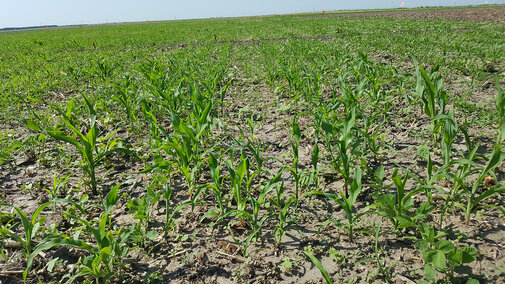

Figure 2. Improperly adjusted combine harvester leads to harvest loss in corn as A) full ear or B) individual seeds. These seeds or ears have the ability to overwinter, germinate in the spring as volunteer corn, and compete with the crop grown in rotation.
Volunteer corn is a competitive weed that can cause significant soybean yield reduction depending on density. If not controlled, it will contaminate the harvested soybean, resulting in dockage (Figure 3). Moreover, volunteer corn encourages the dispersal and survival of western corn rootworm and gray leaf spot disease, limiting the benefits of a corn-soybean rotation.
The preemergence herbicides registered in soybean are not very effective for volunteer corn control. Therefore, the only effective option for controlling glyphosate-resistant volunteer corn in glyphosate-resistant soybean is the postemergence application of acetyl-coenzyme A carboxylase (ACCase) inhibiting-herbicides, also known as graminicides, such as Assure II, Fusilade, Select Max, or Poast Plus.

Managing Glyphosate-Resistant Weeds
Overreliance on glyphosate for weed control in corn and soybean has resulted in the evolution of glyphosate-resistant weeds. Six weeds have evolved resistance to glyphosate in Nebraska. Therefore, there is a need to diversify weed control programs by using herbicides with distinct modes of action or alternate herbicide-resistant crop technology. For example, Liberty-Link soybean has provided growers an opportunity to apply Liberty to control some troublesome weeds, including glyphosate-resistant weeds.


Figure 4. Control of glyphosate-resistant volunteer corn at (left) two weeks after early- postemergence application of Liberty at 22 fl oz/acre and (right) two weeks after sequential or late-postemergence application of Liberty at 29 fl oz/acre in the same plot.
Liberty is a nonselective, contact, postemergence herbicide for broad-spectrum weed control in Liberty-Link soybean. Liberty can be applied sequentially in Liberty-Link soybean, with a maximum cumulative rate of 65 fl oz/acre per growing season. According to the label, a single Liberty application up to 29 to 36 fl oz/acre can be made in Liberty-Link soybean and if needed, another application of 29 fl oz can be made postemergence before soybean start flowering. A recent update to the Liberty label allows a maximum cumulative rate of 87 fl oz/acre per growing season. Two applications, each of 32 to 43 fl oz/acre, could be made.
A field study was conducted at the South Central Agricultural Laboratory (SCAL) near Clay Center in 2013-14 to compare the efficacy of Liberty applied at different rates in single or sequential applications or in tank-mixed combination with graminicides for control of glyphosate-resistant volunteer corn. Liberty applied in single or sequential applications provided greater than 80% control of glyphosate-resistant volunteer corn at 2, 4, and 12 weeks after early postemergence application (Table 1)(Figures 4A; 4B). Graminicides (Assure II, Select Max, Poast Plus, Fusilade) can be tank-mixed with Liberty; however, this combination slightly reduced glyphosate-resistant volunteer corn control at two weeks after postemergence. Therefore, depending on control achieved by Liberty + Assure II or Select Max and volunteer corn infestation/recovery, additional Liberty can be applied if flowering has not begun in Liberty Link soybean (Table 1).
Remember that Liberty can only be applied in Liberty Link soybean NOT in Roundup Ready or Roundup Ready 2Xtend soybean. Application of graminicides (Assure II, Select Max, Poast, Fusilade) will be the only option for volunteer corn control in Roundup Ready or Roundup Ready 2Xtend soybean.
Resource
For more information see Herbicide Programs for Control of Glyphosate-Resistant Volunteer Corn in Glufosinate-Resistant Soybean by Parminder S. Chahal and Amit J. Jhala, in Weed Technology 29:431-443, Weed Science Society of America.
| Herbicide Treatment (rates are per acre) | Percent Volunteer Corn Control 2 weeks after early-POST | Percent Volunteer Corn Control 4 weeks after early-POST | Percent Volunteer Corn Control 12 weeks after early-POST |
|---|---|---|---|
| Liberty 22 fl oz | 66 | 79 | 93 |
| Liberty 29 fl oz | 73 | 90 | 96 |
| Liberty 36 fl oz | 75 | 93 | 99 |
| Liberty 22 fl oz followed by Liberty 29 fl oz | 61 | 98 | 99 |
| Liberty 29 fl oz followed by Liberty 29 fl oz | 70 | 98 | 99 |
| Liberty 36 fl oz followed by Liberty 29 fl oz | 78 | 98 | 99 |
| Select Max 16 fl oz followed by Liberty 29 fl oz | 94 | 99 | 99 |
| Select Max 16 fl oz + Liberty 29 fl oz/acre followed by Liberty 29 fl oz | 91 | 99 | 99 |
| Assure II 5 oz followed by Liberty 29 fl oz | 95 | 98 | 99 |
| Assure II 5 oz + Liberty 29 fl oz followed by Liberty 29 fl oz | 82 | 98 | 99 |
| Note: Second/sequential postemergence application of Liberty was made two weeks after first/early postemergence application. | |||

